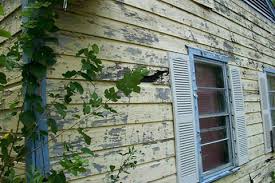
One hundred sixty Houston houses posing a lead-poisoning risk to young children will turn into safe homes with a new $3 million federal grant awarded to the Houston Health Department (HHD).
Matching city bond funds totaling $975,000 from the City of Houston’s Housing and Community Development Department will augment the U.S. Housing and Urban Development (HUD) grant.
“Exposure to lead-based paint in Houston homes continues to poison our children,” said Loren Raun, HHD’s chief environmental science officer. “Lead-poisoned children suffer from a variety of health impacts.”
Lead poisoning in children can result in learning disabilities, behavioral problems, mental retardation, speech and language handicaps and brain damage. Extremely high blood lead levels can trigger seizures, coma or even death.
Every year about 800 Houston children under the age of 6 are confirmed with elevated blood lead levels.
The Lead-Based Paint Hazard Control program at HHD has performed lead reduction activities in 3,116 homes since 1996. Houston has 533,523 houses built before 1980 and 41,524 built before 1940.
Privately-owned or rental homes contaminated with lead and housing low-income children under age 6 qualify for the lead reduction work if they are within Houston city limits. The program targets inner-city neighborhoods, areas more likely to contain older homes with lead-based paint –– the most common source of lead exposure in children.
Homes of families with lead-poisoned children will receive priority for the lead-hazard reduction.
The Centers for Disease Control and Prevention estimates that more than 80 percent of all houses built before 1978 in the United States have lead-based paint in them. Houses built before 1950 pose the greatest hazard to children because they are much more likely to contain lead-based paint than newer homes. The older the house, the more likely it is to contain lead-based paint and a higher concentration of lead in the paint.
HHD’s lead-hazard reduction activities include removal and replacement of contaminated housing components, stabilizing or enclosing painted surfaces and temporarily relocating families during the renovation process to ensure that children are not further lead poisoned. The relocation, provided at no cost to families, takes into consideration each household’s school, employment and transportation needs.
As lead-based paint in older homes deteriorates, it creates contaminated dust as well as paint chips that young children can ingest, especially those between 1 and 3 years of age who frequently pick up objects and put them in their mouths. Home renovation or remodeling can disturb lead paint. Also, a young child can easily chew on painted surfaces such as window sills and door frames in a lead-exposed home.
The main treatment for lead poisoning is to stop the exposure. Removing the lead from a child’s environment helps ensure a sustained decline in blood-lead levels. In some cases, medications can lower elevated blood-lead levels.
The longer children are exposed to lead, the greater the likelihood that they will sustain damage to their health. Lead can harm virtually every system in the human body, but it is especially damaging to the developing brain and nervous system of fetuses and young children. It can damage the kidneys and the reproductive system and cause high blood pressure.










